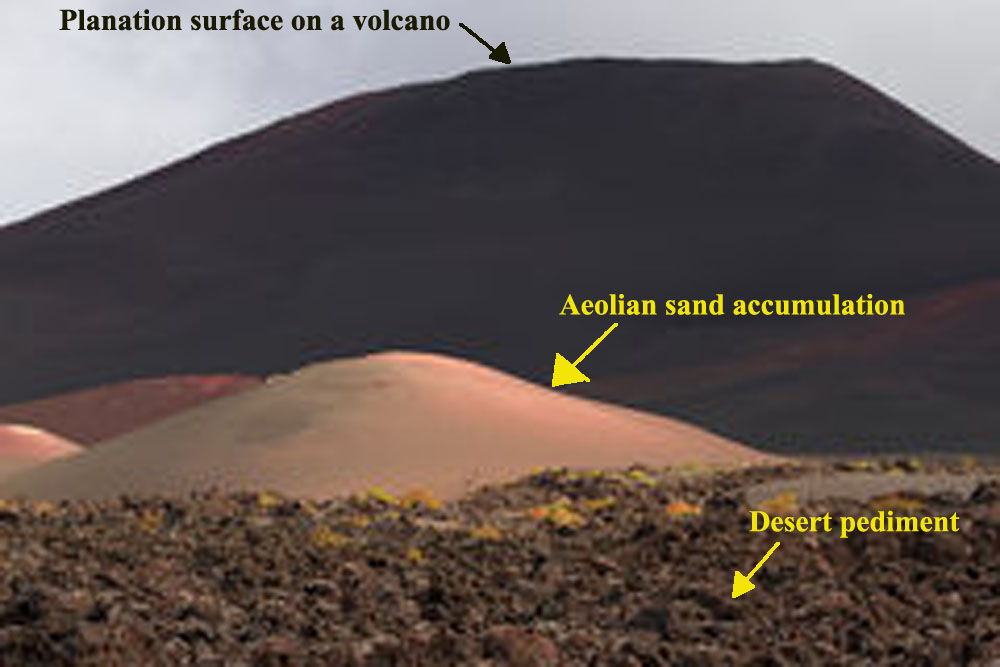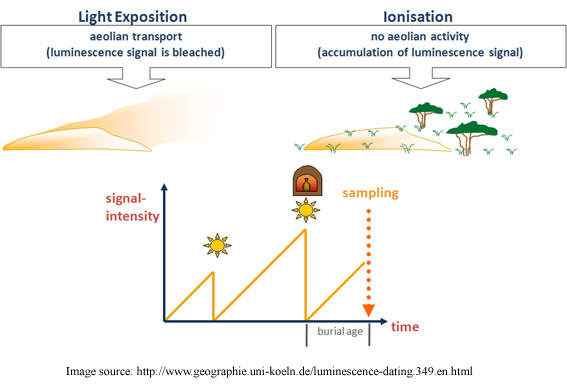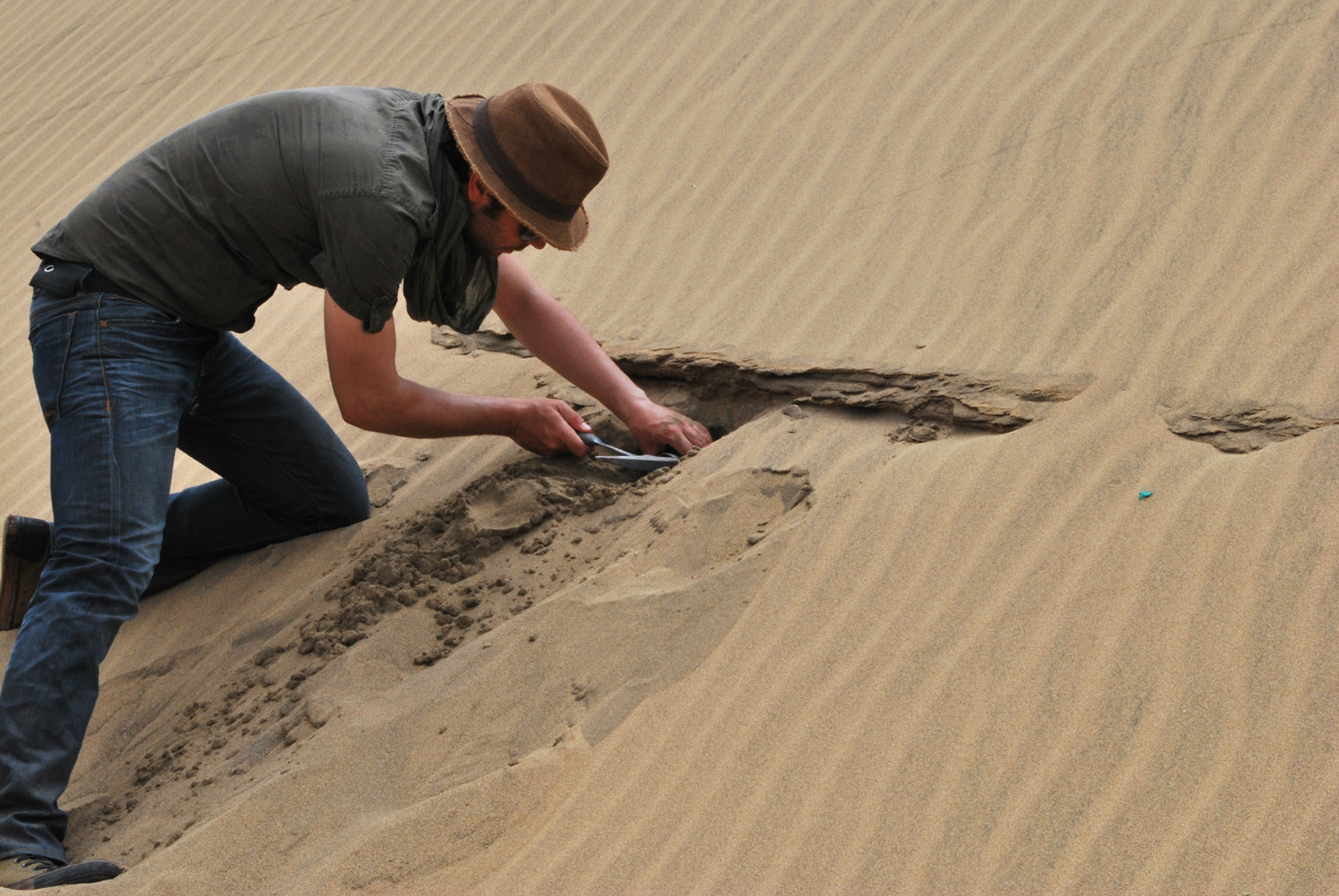Methods
Summary
Cosmic ray exposure (CRE) dating involves measuring the cosmogenic nuclides produced in exhumed rock surfaces. When brought to the surface, previously buried rocks start to accumulate in-situ produced cosmogenic nuclides, notably Be-10, Al-26, and Cl-36, produced within the mineral lattices through nuclear reactions between the minerals' constitutive atoms and the highly energetic cosmic-ray particles. The concentration of the in-situ produced cosmogenic nuclides, whose dominant production mechanisms are spallation and/or neutron capture, increases proportionally with the exposure duration and for this reason they are considered as natural geochronometers, allowing us to date geological events that bring rocks from the subsurface to the ground surface (e.g. Gosse and Phillips 2001). CRE is routinely used in dating surfaces exhumed or formed in rocks such as, desert pediments, fault escarpments, lava plateaus and erosional features carved by glacial, fluvial or aeolian processes (cf. Dunai, 2010).
Optically stimulated luminescence (OSL) dating (cf. Athanassas and Wagner, 2016) builds on the phenomenon that light is emitted from ionized geological minerals when undergoing optical stimulation. Natural ionizing radiation is universal and includes radioactivity (expressed by the emission of α, β, and γ rays from decaying atomic nuclei of U-235, U-238, Th-232, and K-40) and cosmic rays. Natural ionizing radiation excites the mineral to a prolonged excitation state in which electrons accumulate in lattice defects inherent to the mineral; the longer the ionization over geological time the larger the amount of trapped charge. An OSL age is the quotient of the radiation dose and the rate at which it was absorbed. Among natural minerals, quartz and feldspar are the most suitable geochronometers to date by OSL. OSL dating can be applied to numerous types of depositional environments, such as aeolian (sand dunes and loess), fluvial, lacustrine, glacial, alluvial etc (cf. Rhodes, 2011).
The Martian environment comprises an extreme desert. Taking this into consideration, all possible stratigraphic and topographic contexts suitable for OSL and CRE dating will be sought on Lanzarote.

The desert environment of Lanzarote exhibits several landforms common to Mars that have been developed on its volcanic landscape and are potentially suitable for CRE or OSL dating: pediments, planation surfaces, sand dunes and alluvial deposits are a few of the common features.
Prior to fieldwork, we will pinpoint suitable contexts in the desert areas of Lanzarote through open GIS web services (e.g. GoogleEarth, Bing Maps), open-source multispectral imagery (e.g. Landsat) and single aperture radar (SAR) imagery (e.g. Sentinel-1). At the photo-interpretation stage a number of suitable sites will be marked out on Lanzarote. Nevertheless, the full spectrum of stratigraphic and topographic contexts suitable for OSL and CRE dating will be found at all possible scales only once we have embarked on the reconnaissance mission to the Canary Islands.
Challenges
Sampling of rock surfaces for cosmic ray exposure dating may be simple in terms of material extraction, but is anything but simple as far as the site geometry is concerned. Production of cosmogenic nuclides is very sensitive to topographic obstructions in the vicinity of the sample site, and for this reason the surrounding topography must be depicted precisely in order to produce accurate models of the cosmic ray flux. Topography can be depicted at scale using surveying equipment such as inclinometers, rods, GPS etc. Our goal will be to document the sampling and surveying procedures at representative sample sites on Lanzarote which demonstrate increasingly complex geometries.

Sediment collection for OSL dating may need special precautions too. A major concern is the sensitivity of OSL to white light and, hence, special care (e.g. cover of the sample spot with opaque tarpaulin, use light-tight tubes), should be taken when sampling in daytime. Sampling is performed either in natural or artificial stratigraphic sections. Accurate registration of the environmental radiation (due to U, Th, K decay in the sediments) should be made on-site using a portable gamma spectrometer.
Cosmic radiation has a small contribution to the growth of OSL signal on the Earth’s surface, but it is delivered at higher rates on Mars due to its thin atmosphere. Thus, accurate topographic depiction should be considered not only for CRE but also for OSL dating. In the simplest case where the cosmic rays impinge unobstructed on level landforms, be it depositional like river terraces or erosional like planation surfaces, modeling of their contribution to the dose rate (in case of OSL dating) or the nuclide production rate (in case of CRE dating) can be straightforward, considering only some correction for self-shielding due to the thickness of the sample's overburden. Nevertheless, natural landscape exhibits variable complexity with relief angles ranging from obtuse to acute or even more complex situations (e.g. tilted and sinusoidal reliefs) where accurate modeling of the cosmic ray flux can be dealt with advanced numerical integration methods. Accurate depiction of the topography around the sample site is, thus, of paramount importance. For ground crews topographic or geometric reconstruction can be achieved through the determination of points in 3D space using theodolite, rangefinders and inclinometers. On Lanzarote, we will undertake examination of possible topographical configurations as those described above, ranging from undulated landscapes to complex geometric surfaces. We will show how to use the surveying equipment in order to produce accurate digital representations of the local topography, which can be in suitable format for further processing on a computer to model the cosmic ray flux.
As sampling may stumble upon consolidated or strongly cemented sediments a gasoline-powered drill (as those designed for paleomagnetic sampling) will be required.
Protocols
This project has not yet shared any protocols.



